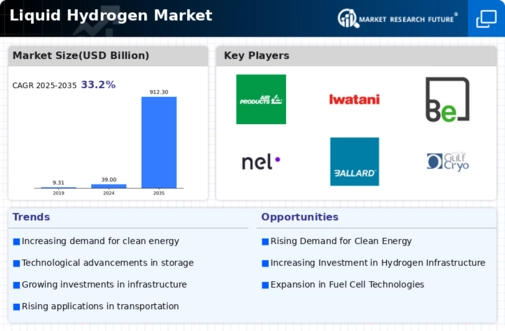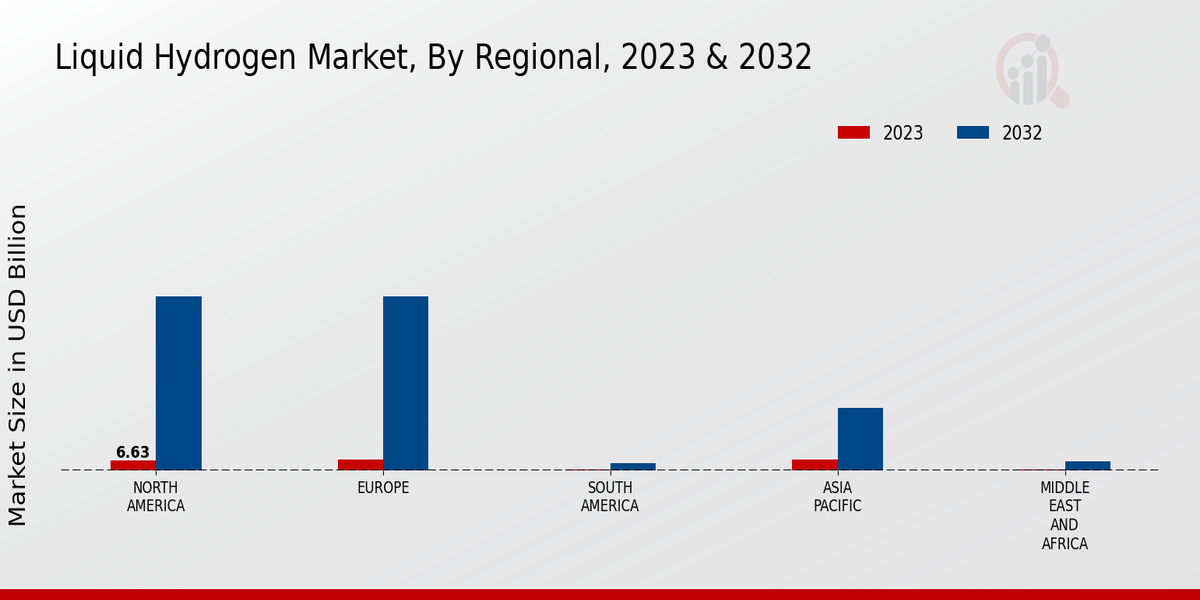Market Growth Projections
Rising Demand for Clean Energy
The Global Liquid Hydrogen Market Industry is experiencing a surge in demand driven by the global shift towards clean energy solutions. As nations strive to meet carbon neutrality goals, hydrogen emerges as a viable alternative to fossil fuels. For instance, countries like Japan and Germany are investing heavily in hydrogen infrastructure, aiming to reduce greenhouse gas emissions. This transition is projected to elevate the market value to 39.0 USD Billion in 2024, with expectations of reaching 912.3 USD Billion by 2035. The anticipated compound annual growth rate (CAGR) of 33.17% from 2025 to 2035 underscores the urgency for sustainable energy sources, positioning liquid hydrogen as a pivotal player in the energy landscape.
Emerging Industrial Applications
The industrial sector is increasingly recognizing the potential of liquid hydrogen, thus influencing the Global Liquid Hydrogen Market Industry. Industries such as steel manufacturing and chemical production are exploring hydrogen as a cleaner alternative to traditional fossil fuels. For instance, hydrogen is being utilized in steel production to reduce carbon emissions, aligning with global sustainability goals. This trend is likely to expand the market's application scope, driving demand for liquid hydrogen. As industries seek to decarbonize their operations, the market is poised for substantial growth, contributing to the projected value of 912.3 USD Billion by 2035.
Government Policies and Incentives
Government policies play a crucial role in shaping the Global Liquid Hydrogen Market Industry. Many governments are implementing favorable regulations and financial incentives to promote hydrogen adoption. For instance, the European Union's Hydrogen Strategy aims to scale up hydrogen production and infrastructure, providing substantial funding for research and development. Such initiatives are likely to stimulate market growth, as they create a conducive environment for investment and innovation. The alignment of public policy with private sector interests could catalyze the expansion of the liquid hydrogen market, driving it towards the projected market value of 912.3 USD Billion by 2035.
Growing Applications in Transportation
The transportation sector is increasingly adopting liquid hydrogen as a clean fuel alternative, significantly impacting the Global Liquid Hydrogen Market Industry. Hydrogen fuel cell vehicles are gaining traction due to their zero-emission capabilities and longer ranges compared to battery electric vehicles. Major automotive manufacturers are investing in hydrogen technology, with companies like Toyota and Hyundai leading the charge. This shift in transportation dynamics is expected to contribute to the market's growth, as the demand for sustainable transport solutions rises. The anticipated CAGR of 33.17% from 2025 to 2035 reflects the potential of liquid hydrogen to revolutionize the transportation landscape.
Technological Advancements in Hydrogen Production
Innovations in hydrogen production technologies significantly influence the Global Liquid Hydrogen Market Industry. Advancements such as electrolysis and steam methane reforming are enhancing efficiency and reducing costs. For example, the development of high-temperature electrolysis is expected to lower the energy consumption required for hydrogen production. These technological improvements not only make liquid hydrogen more accessible but also align with global sustainability initiatives. As production methods evolve, the market is likely to see increased investment, further propelling its growth trajectory. The combination of enhanced production techniques and rising demand positions liquid hydrogen as a cornerstone of future energy systems.























